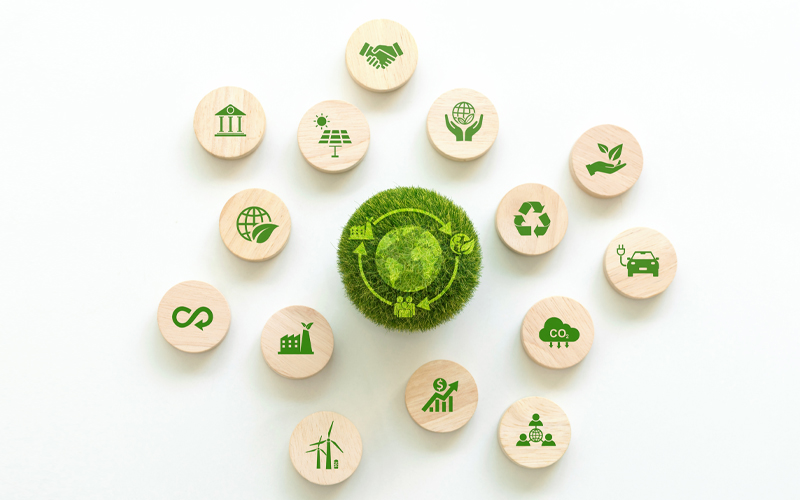In the bustling world of retail, it's no secret that sustainable practices are no longer just a trend, but a pressing demand. The urgency of climate change and its severe repercussions have thrust these sustainable approaches into the limelight. However, as the shopping bags we carry evolve from plastic to cloth, there lies a looming question: as we steer towards a climate-sustainable future, who shoulders the financial burden?
What Burden?
As more and more people are becoming environmentally aware, businesses are feeling the pressure to act responsibly. To stand tall in the green arena, retailers have taken significant steps. They are investing in renewable energy sources like solar panels for their stores and warehouses, opting for efficient transportation to cut down emissions, transitioning to sustainable packaging materials, donating surplus food to charities, and implementing numerous other sustainable initiatives.
But it doesn’t stop there. Retailers are also exploring partnerships with eco-conscious brands, attending sustainability workshops, and training their workforce in green practices. Moreover, several digital solutions have emerged as essential tools in this transition, helping businesses become more adaptive and agile in implementing sustainable practices.* However, with the advent of these innovations and digitisation, the price tag also seems to hover up and up.
Take, for instance, a clothing brand that decides to transition to organic materials or an electronics store that plans to invest in eco-friendly packaging. These choices, while beneficial for the environment, involve extensive research, quality checks, and sometimes even new machinery, eventually increasing the overall cost.
Now, the question is, will the brand absorb this cost, or will it gently slide into the price tags, pushing the consumer to foot the bill?
The answer is complex. These expenses will likely be divided among various stakeholders – retailers, suppliers, consumers, and even the government. Retailers will undoubtedly shoulder a significant portion as they adapt to new technologies and infrastructures. But they might also transfer some of these expenses to the consumers via increased prices.
When it comes to consumers, the situation presents a dichotomy. On one side, there is an optimistic group of consumers who believe in paying a premium for sustainable products. They view this extra cost as a direct investment in the planet's future. On the flip side, there is a set of consumers, equally concerned about the environment but financially strained, asking, "Why should we have to pay more for doing what's right?"
It is also important to note here that the transition to a more sustainable retail industry is not easy. Some brands, entrenched in non-sustainable practices will face substantial overhaul costs. They might need to retrain employees, redesign their supply chain, or even rebrand entirely. In contrast, newer or already-green brands may have a smoother, less costly transition. This disparity means that some businesses might find it more challenging than others to avoid passing on the costs to consumers.
Yet, hope isn't lost. Looking towards the future, one can foresee a retail landscape where businesses and consumers collaboratively share the responsibility of sustainable retailing and bear the cost.
There are many ways to make this future a reality. Loyalty programmes, incentives, and discounts may be curated for those willing to make a conscious purchase, somewhat offsetting the higher prices of sustainable goods. Similarly, businesses may work on streamlining their operations and harnessing technology to ensure that the added costs of sustainable practices are minimised. Governments may also play an influential role, not only by offering incentives, subsidies, or tax breaks but also by setting regulatory standards and pushing industries towards a green transition.
Additionally, digital learning solutions and services can offer valuable help for the retail industry to become more sustainable. By using digital learning, retailers can reduce their environmental impact, teach their employees and consumers about sustainable practices, and track their progress on sustainability goals. Such educational endeavours will foster a community of informed consumers and employees, promoting green choices in every facet of their lives. With this, they can ensure their businesses operate efficiently, possibly reducing the costs of going green.
In conclusion, as we navigate the complex maze of climate sustainability in retail, it's clear that the financial aspect is multifaceted. While there is no straightforward answer to "Who will pay?", it is evident that a collective effort from retailers and consumers can pave the way for a balanced, green future in the world of retail. Only with this collaboration can we hope for a sustainable retail environment where the planet and the pocket both thrive.
*For organizations on the digital transformation journey, agility is key in responding to a rapidly changing technology and business landscape. Now more than ever, it is crucial to deliver and exceed on organizational expectations with a robust digital mindset backed by innovation. Enabling businesses to sense, learn, respond, and evolve like a living organism, will be imperative for business excellence going forward. A comprehensive, yet modular suite of services is doing exactly that. Equipping organizations with intuitive decision-making automatically at scale, actionable insights based on real-time solutions, anytime/anywhere experience, and in-depth data visibility across functions leading to hyper-productivity, Live Enterprise is building connected organizations that are innovating collaboratively for the future.







